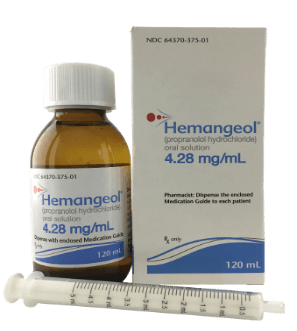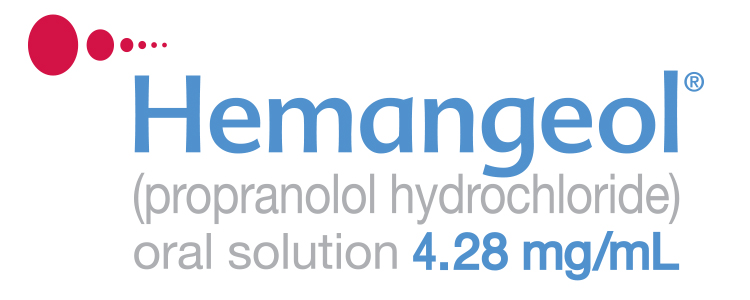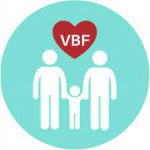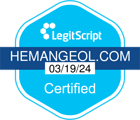Frequently Asked Questions

Infantile hemangiomas, sometimes called “strawberry marks,” are benign tumors formed from the overgrowth of blood vessels on or under the skin.
Infantile hemangiomas are the most common benign tumors of infancy—affecting up to 10% of all infants and up to 30% of premature babies.
The causes of infantile hemangioma are not well understood, but there are certain babies that are at a higher risk of developing them. These include babies with low birth weight, females, Caucasians, and premature babies. It’s important to know that you did nothing wrong and it’s not your fault your baby has infantile hemangioma.
In the some severe cases, infantile hemangiomas can interfere with an important function:
- On the eyes, it can affect your baby’s vision, especially because eye development is crucial at an early age
- On the nose, it can affect your baby’s breathing
- On the mouth, it can affect your baby’s food intake
Some infantile hemangiomas are at high risk of bleeding, which can lead to anemia, blood transfusion, and/or infection. Infantile hemangiomas that are bleeding can also be extremely painful for your baby.
Infantile hemangioma is not contagious so your baby can continue to be around other babies and other members of your family.
Hemangiomas grow quickly and appear shortly after your baby is born. By the time your baby is 3 months old, the hemangioma growth will be 80% complete. However, infantile hemangiomas can grow until your baby is up to 6 months of age.3 Earlier treatment prevents faster and larger growth of the infantile hemangioma and lowers the risk of permanent scarring and disfigurement.
HEMANGEOL (propranolol hydrochloride) oral solution is the first and only FDA-approved treatment for infantile hemangioma, an overgrowth of blood vessels on or under the skin.
It is a prescription medicine used to treat proliferating infantile hemangioma that requires treatment with a medicine that spreads throughout the body.
HEMANGEOL has been specifically formulated for babies. It has no alcohol, sugar, or parabens and comes in a strawberry-vanilla flavor that can be added to small amounts of milk and juice.
HEMANGEOL is thought to work directly on the blood vessels that make up the infantile hemangioma. It narrows the blood vessels that already formed, prevents new ones from growing, and destroys and removes these unwanted cells from inside the hemangioma.
HEMANGEOL was studied in a primary clinical trial in 460 babies with infantile hemangiomas (excluding life-threatening infantile hemangioma, function-threatening infantile hemangioma, and ulcerated infantile hemangioma with pain and lack of response to simple wound care measures). In this study, 60% of hemangiomas were completely or nearly completely resolved by 6 months with HEMANGEOL.
Of the babies in the trial, 88% showed improvement after 5 weeks*.
A second uncontrolled study in 23 patients with proliferating infantile hemangioma included:
- Function-threatening infantile hemangioma
- Infantile hemangioma in certain anatomical locations that often leave permanent scars or deformity
- Large facial infantile hemangioma
- Smaller infantile hemangioma in exposed areas
- Severe ulcerated infantile hemangioma
- Pedunculated infantile hemangioma
Target lesions resolved in 36% of patients by 3 months.
*Photographic evaluation not done prior to 5 weeks
In clinical trials, the age of babies starting the treatment was between 5 weeks and 5 months. Your doctor will determine the best age for your baby to start treatment.
In the clinical trial, HEMANGEOL was taken for 6 months. Only 10% of the baby’s required retreatment due to the infantile hemangioma coming back. Your doctor will decide how long your baby should be on therapy.
Your doctor will determine the amount of HEMANGEOL your baby needs based on his or her weight. This amount will change over the course of treatment, as your baby grows. Your doctor will advise you on any dose adjustments and follow-up appointments.
HEMANGEOL comes with a specifically designed oral syringe and bottle adapter for your convenience.
Follow the detailed instructions for use that come with HEMANGEOL to learn the correct way to give a dose of the medicine to your baby.
You should give HEMANGEOL exactly as your baby’s doctor tells you. The doctor may change the dose until it is right for your baby and as your baby’s weight changes.
Always give HEMANGEOL during or right after a feeding. The medicine should be given 2 times a day, at least 9 hours apart. If your baby spits up a dose or if you are not sure your baby got all of the medicine, do not give another dose. You should wait until the next scheduled dose.
Your baby’s doctor will check to make sure your baby can tolerate HEMANGEOL by checking for slowing of the heart rate and low blood pressure for 2 hours after the medicine is started or the dose is increased.
HEMANGEOL is a prescription medicine your doctor can order through the HEMANGEOL Patient AccessSM program.
HEMANGEOL Patient AccessSM is a pharmacy service offered by Pierre Fabre. This program coordinates the fulfillment of your baby’s prescription and provides additional services to help you understand how to use HEMANGEOL in order to ensure a safe and secure experience for your baby.
After receiving a prescription from your doctor, HEMANGEOL Patient AccessSM customer service will contact you to manage your prescription fulfillment and ship HEMANGEOL directly to your home.
Pierre Fabre will also offer patient education and additional support services to help you during your baby’s treatment with HEMANGEOL.
If for some reason, you need to get HEMANGEOL from a pharmacy, ask your doctor and arrangements can be made through HEMANGEOL Patient AccessSM.
If your baby isn’t eating or is vomiting, you should skip the dose of HEMANGEOL because the medicine may mask the symptoms of hypoglycemia.
If your baby is not eating because of illness, is vomiting, or has diarrhea, you should not give HEMANGEOL until his or her feeding is back to normal. Once their appetite has returned, and vomiting, or diarrhea has passed, you can give the next planned dose after a meal.
It’s important not to try and make up for missed doses of HEMANGEOL, because it could lead to overdosing.
If you aren’t sure whether your baby got the whole HEMANGEOL dose,
don’t worry. Do not give another dose. Just wait until the next scheduled dose.
If your baby has missed a dose, don’t worry. Do not give another dose. Just wait until the next scheduled dose.
If your baby refuses to take HEMANGEOL through the oral dosing syringe, it can be mixed with a small amount of fruit juice or milk (breast or formula) suitable for your baby’s age.
The mixture should be used within 2 hours. Do not mix HEMANGEOL with a full bottle of milk or fruit juice.
The oral dosing syringe that comes in the HEMANGEOL box is specifically designed to measure the medicine. If you’ve lost or misplaced the syringe, contact HEMANGEOL Patient AccessSM toll free at 855-231-9522 for another one, before giving your baby the next HEMANGEOL dose.
HEMANGEOL can cause serious adverse effects like hypoglycemia and make it more difficult to recognize the signs and symptoms. However, there are steps that you can take to reduce the risk.
HEMANGEOL should be given during or immediately after feeding to avoid hypoglycemia. Feed your baby regularly during treatment and tell your doctor if your baby has a poor appetite.
If necessary, you can add HEMANGEOL to a small amount of milk or juice. If your baby isn’t feeding due to an illness or vomiting, don’t give your baby the medicine until he or she is feeling normal again.
It’s important to be aware of the signs of hypoglycemia, which include fast or irregular heartbeats, palpitations, sweating, irritability, sleepiness, and excessive hunger. If your baby shows any of these signs, call your doctor or go to the nearest emergency room right away.
Although it’s uncommon, HEMANGEOL may cause slow heart rate or low blood pressure. Symptoms include pale skin color, slow or uneven heartbeats, arms or legs feel cold, blue or purple skin color, or fainting. If your baby shows any of these symptoms, contact your doctor.
HEMANGEOL can cause spasm of your baby’s airways. Although this isn’t common, call your doctor or go to the emergency room right away if your baby experiences breathing problems or wheezing.
If your baby has infantile hemangioma, it’s important to know you’re not alone. There are support and advocacy groups dedicated to providing you the help you and your family deserves.
Download the FAQ Guide of the Vascular Birthmarks Foundation using the button below. To learn more about the Vascular Birthmarks Foundation, visit their website.
The Vascular Birthmarks Foundation website is not owned or operated by Pierre Fabre. Links to all outside sites are provided as a resource only. Pierre Fabre accepts no responsibility or liability for the content or services of other websites.
Patient Video
To view a video of a family dealing with infantile hemangioma, click on the icon or scroll down.
You’re Not Alone
To find support and advocacy groups that are dedicated to helping your baby and your family deal with this condition, click on the icon or scroll down.
Resources to help you afford Hemangeol
- Co-Pay Savings Program: Pay no more than $47 per bottle, including refills - Patient Assistance Program
You’ve Got Questions, We’ve Got Answers
You may be filled with many questions and concerns about your baby’s condition. For answers to frequently asked questions, click on the icon or scroll down.
Patient Video
Parents share their experience with infantile hemangioma. After discovering a hemangioma on their daughter’s arm, the parents sought help from Dr. Ana Duarte, who provides insight to an available treatment option
Support & Advocacy Groups
Since your baby has developed infantile hemangioma, you may be feeling confused, anxious, guilty, or concerned how others will react. You may also feel that your sleep, family life, relationships, and career have been affected. You’re not alone—many other families have felt the same way. The good news is there are support and advocacy groups dedicated to getting the help you and your family deserves.
The Vascular Birthmarks Foundation (VBF)
P.O. Box 106
Latham, NY 12110-0106
Phone: (877) 823-4646
E-mail [email protected]
Website: birthmark.org
Pay no more than $47
*Coupon offer may not be used with Medicare Part D, Medicaid, Va/DoD, Tricare or other federal or state health care programs. Please see program conditions and eligibility criteria to apply.
Important Safety Information for HEMANGEOL
Do not give HEMANGEOL to your child if your child:
- was born prematurely and has not reached the corrected age of 5 weeks
- weighs less than 4 ½ pounds
- is allergic to propranolol or any of the other ingredients in HEMANGEOL
- has asthma or a history of breathing problems
- has a heart problem, slow heart rate (less than 80 heart beats per minute), very low blood pressure
- is at risk for low blood sugar, for example is vomiting or unable to take feedings
- has high blood pressure caused by a tumor on the adrenal gland, called “pheochromocytoma”
Tell your doctor about all of your child’s medical conditions, all of the medicines your child takes, and all of the medicines that you take if you are breastfeeding your child.
HEMANGEOL can cause serious side effects, including:
Low blood sugar (hypoglycemia), especially if your child is not taking feedings, or is vomiting. HEMANGEOL may make it more difficult to recognize the signs and symptoms of low blood sugar in your child. To help reduce the risk of low blood sugar with HEMANGEOL, give HEMANGEOL during or shortly after feeding your child. Feed your child regularly during treatment. Tell your doctor if your child has a poor appetite. If your child is not taking feedings, due to an illness or vomiting, do not give HEMANGEOL until your child is taking feedings normally again.
If your child has any of the signs or symptoms of low blood sugar listed below during treatment with HEMANGEOL, stop giving your child HEMANGEOL and call your doctor or go to the nearest emergency room right away.
Signs or symptoms of low blood sugar include: pale, blue or purple skin color, sweating, irritability, crying for no apparent reason, irregular or fast heartbeat, poor feeding, low body temperature, unusual sleepiness, seizures, breathing stops for short periods of time, and loss of consciousness
If your child is conscious, give him/her a drink of a liquid containing sugar.
Other serious side effects can include:
- New or worsening slow heart rate (bradycardia) or low blood pressure (hypotension).
- Breathing problems or wheezing.
- Stroke. HEMANGEOL may increase the risk of stroke in certain children who have severe problems with the blood vessels in their brain, particularly if your child has a large hemangioma that affects the face or head.
Call your doctor or go to the nearest hospital emergency room if your child has:
- pale skin color, slow or uneven heartbeats, arms or legs feel cold, blue or purple skin color, or fainting.
- breathing problems or wheezing during treatment with HEMANGEOL.
The most common side effects include: sleep problems, worsening respiratory tract infections, diarrhea, and vomiting.
These are not all the possible side effects of HEMANGEOL. Call your doctor for medical advice about side effects.
You are encouraged to report negative side effects of prescription drugs to the FDA. Visit www.fda.gov/medwatch or call 1-800-FDA-1088.
Please see Full Prescribing Information and Medication Guide.




